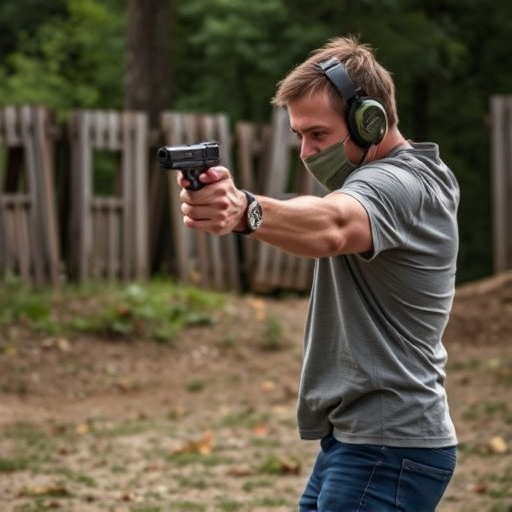The increasing popularity of self-defense stun guns among college students is driving campus security debates. With concerns about evolving crime rates and remote learning safety, students view stun guns as essential tools for personal protection. This trend prompts institutions to adopt advanced detection technologies like sensitive sensors and AI algorithms to identify stun gun usage discreetly, balancing student autonomy with safety protocols. The future may include portable detectors integrated with wireless networks and real-time data analytics, enhancing security while preserving privacy.
“In recent years, self-defense stun guns have gained popularity among college students seeking personal protection on campus. As concerns about safety grow, so does the debate around concealed stun gun detection. This article explores the rise of these self-defense tools, delves into the challenges and discussions surrounding their undetected use, and analyzes their impact on campus security. We also consider potential solutions and the future of stun gun detection technologies, aiming to equip students with knowledge in the pursuit of enhanced personal safety.”
- The Rise of Self-Defense Stun Guns on College Campuses
- Concerns and Debates Around Concealed Stun Gun Detection
- Impact on Campus Safety and Security Measures
- Potential Solutions and Future Outlook for Stun Gun Detection Technologies
The Rise of Self-Defense Stun Guns on College Campuses
In recent years, there’s been a notable surge in the popularity of self-defense stun guns among college students across various campuses. This trend reflects a growing concern for personal safety, especially as crime rates and campus security threats continue to evolve. With the increase in remote learning and late-night study sessions, many students now carry these compact devices as a means of protection while navigating campus grounds alone.
College students are increasingly recognizing the importance of being prepared for unexpected situations. Self-defense stun guns offer a non-lethal option for deterring potential attackers, providing users with a sense of empowerment and security. This shift in self-protection strategies highlights the need for campuses to adapt their safety measures and policies regarding concealed carry permissions, ensuring that students’ rights to personal defense are balanced with overall campus safety and security protocols.
Concerns and Debates Around Concealed Stun Gun Detection
The debate around concealed stun gun detection highlights a delicate balance between public safety and individual rights, especially on college campuses where self-defense stun guns are becoming increasingly common. While proponents argue that detecting such devices is crucial to preventing potential campus crimes, opponents raise concerns about the effectiveness and privacy implications of such technologies.
One primary concern revolves around false positives, as current detection methods may flag non-lethal self-defense tools, leading to unnecessary confrontations and embarrassment for owners. Additionally, civil liberties advocates worry that mandatory stun gun detection policies could infringe upon the right to carry self-defense devices, which many college students view as a vital tool for personal safety in an uncertain world. The discussion intensifies when considering the potential for over-policing and racial profiling, as certain communities may be disproportionately affected by such technologies.
Impact on Campus Safety and Security Measures
The presence of concealed stun gun detection systems on campuses has sparked debates regarding campus safety and security protocols. With self-defense stun guns becoming increasingly accessible to college students, institutions are left to balance student autonomy with ensuring a secure learning environment. The impact of these devices extends beyond individual protection; they can influence the overall perception of safety among the student body and faculty.
Campus security measures must adapt to this new reality by implementing advanced detection technologies and training staff to handle potential stun gun incidents. This shift in focus may lead to more robust emergency response plans, regular security drills, and an enhanced sense of awareness among students. However, it also raises questions about privacy, student rights, and the role of technology in maintaining a safe academic space.
Potential Solutions and Future Outlook for Stun Gun Detection Technologies
With the increasing prevalence of self-defense stun guns among college students, there’s a growing need for advanced detection technologies to address safety concerns. Potential solutions involve integrating sensitive sensors and AI algorithms into security systems to identify stun gun usage discreetly. These technologies can analyze subtle changes in air pressure, electrical signals, or body movements that might indicate the deployment of such devices.
Looking ahead, the future of stun gun detection may see more sophisticated integration with existing campus safety infrastructure. This could include wireless networks, wearable sensors, and real-time data analytics platforms. Such innovations promise to enhance security measures, ensuring a safer environment for students while respecting their privacy. Additionally, ongoing research in this field might lead to the development of portable detectors that could be utilized during emergency situations or by law enforcement agencies.
As the debate around self-defense stun guns for college students continues, it’s clear that concealed stun gun detection technologies play a crucial role in campus safety. While current methods face challenges, ongoing research and development in this field offer hope for more effective solutions. By implementing advanced detection systems and enhancing security measures, colleges can strike a balance between student autonomy and ensuring a secure learning environment. As technology evolves, the future of stun gun detection looks promising, potentially revolutionizing campus safety protocols.
